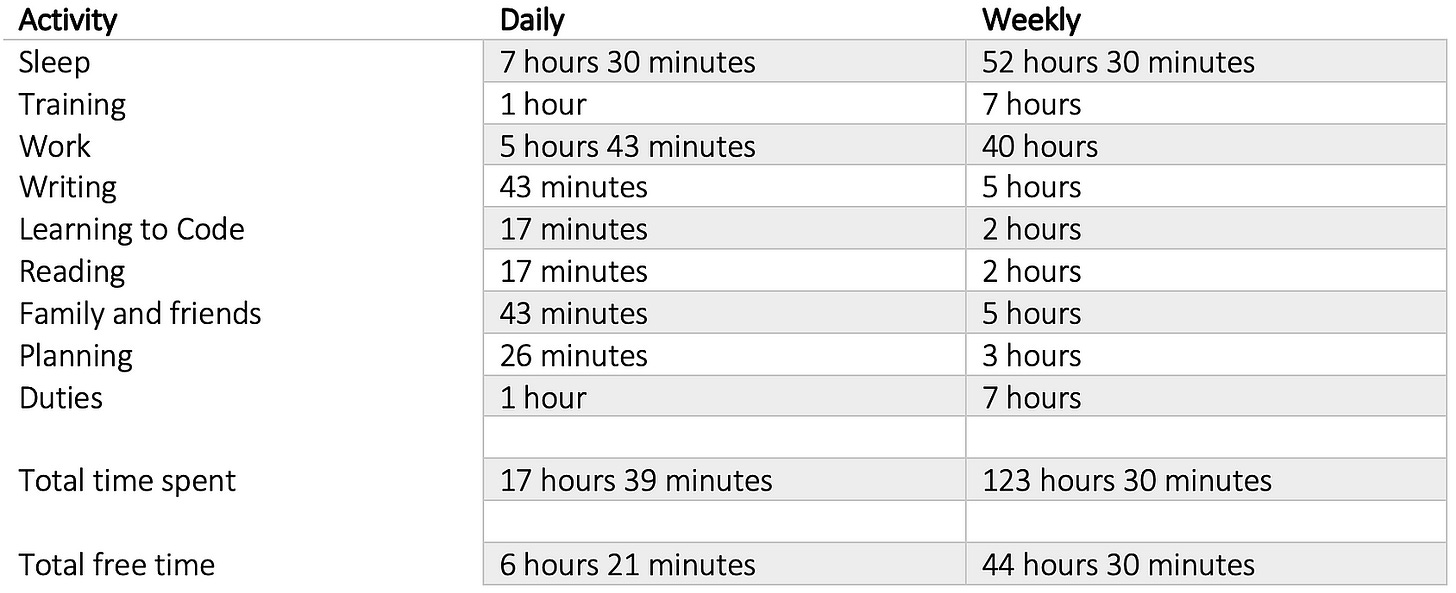Priority Based Scheduling: Is your mouth writing cheques you can not cash?
The Mid-Week Energy Boost #13 - Read Time: 4 Minutes
As the ball dropped in New York, firework displays lit the Auckland Sky Tower in New Zealand, children roamed Romania dressed as bears to chase away evil spirits and the Danish broke plates on their friends' doorsteps as a gesture of good luck, the majority of people of these nations unknowingly had something in common.
An estimated 80% of people worldwide, and some 188.9 million adult Americans, spent the closing days of December reflecting on their year, gaining clarity on the trajectory they would like to take their lives, and setting priorities and plans for the coming year in a bid to improve their quality and enjoyment of life (Choi 2020).
Ballard (2020) asserts that the most common resolutions were 'exercising more (50%), saving more (49%), eating more healthily (37%), [. . .], reducing stress (34%), getting more sleep (30%)' with almost a quarter of Americans intent on improving relations with and spending more time with family.
Haden (2020) suggests that that '80 percent of people who make New Year's resolutions have dropped them by the second week of February', while research conducted by Strava, a popular online exercise tracking app, predicts that 'Quitter's Day' (19 January) is the most likely day for people to renege on their New Year's fitness journey.
As a result, reflection upon and reconsideration of our priorities are of paramount importance at this time if we are to make 2023 really count.
Undoubtedly, implementing these activities would increase both life expectancy and life experience exponentially and, as a result, it is important that we evaluate our progress with these intentions and recalibrate our course if necessary.
We must honestly evaluate if our schedule reflects our priorities.
Schedule
Our schedule has one function; to act as:
'a time budget to help you decide how your hours should be used given the priorities you have identified for yourself.'
(Belludi 2008)
Although the majority of people use some form of scheduling, the data show that the efficacy of these modalities are lacking.
The preponderance of scheduling techniques and strategies certainly help us to allocate time to activities but few assist us in aligning the activities we are undertaking with our priorities.
Many, including myself, waste much of our time with low impact, meaningless tasks - by whatever definition we personally attribute to that - that don't bring us any closer to our purpose or goal.
‘We fill 'to-do lists' that never end, seem constantly busy yet spin our wheels in the sand.’
I was 'working hard' yet not producing as many articles as I'd hoped, I was 'training consistently' but not hitting my cycling numbers and I was 'making time' for family and friends but not connecting as much as I'd like.
Why was this? Afterall, I was doing everything I could!
I decided to crunch the numbers and analyse my schedule over the month of January 2022 to assess what my average week looked like. My four main goals, outside of developing in my current career, were as follows:
Learn to code (Python)
Improve body composition and cycling stats
Nutrition adherence
Sleep 8 hours per night (10:30 - 06:30)
Training plan adherence
Write daily
Connect more with friends and family
With 168 hours in a week, here's how the average week of January 2022 looked:
Upon looking at the data objectively, it was abundantly clear that my schedule did not match my priorities and, as a result, I was not making the desired progress in those areas.
I was not investing in the process, in fact the contrary was true;
I was wasting 6 hours 21 minutes per day doing meaningless activities - watching television, catching up on news, scrolling on my phone or playing computer games.
Although I appreciate that down-time has its place in a well structured schedule, wasting almost a quarter of my day on things I felt were meaningless was a real eye opener.
This nonchalent disregard for time management had also spilled into schedule nonadherence. For example my sleep time had slipped from 10:30 to an average of 11:42 which resulted in morning cycling sessions being moved to the evening thus eating into writing blocks.
One bad decision compounded into a litany of bad decisions which I would always 'rationally justify to myself'.
Disconcerted and astonished by my findings, I replicated the exercise with some clients and friends, all of whom are very successful within their fields and, to our amazement, all but 1 of the cohort of twenty showed a daily burn of at least 4 hours of activities which brought them little to no fulfilment and certainly didn't move the needle on their life goals.
The data are clear; if we don't schedule stringently to our priorities and protect that time, our time will be filled by meaningless activities or, worse yet, the capricious agendas of others.
With my intentions for 2023 well and truly set in stone, I want to share with you the processes and systems I developed from February until December 2022 to ensure that my schedule reflected my intentions.
Check out Sunday’s article ‘Priority Based Scheduling: 3 Strategies to Ensure Your Schedule Matches Your Intentions’ to get these insights.
Bibliography
Ballard, J. 2020, Exercising more and saving money are the most popular 2020 New Year’s Resolutions, YouGov, Washington
Belludi, N. 2008, Budgeting Your Time by Your Priorities, Right Attitudes, London
Berkin, S. 2005, The Art of Project Management: How to Make Things Happen, Microsoft, San Francisco
Choi, C., 2020 New Year's Resolution Statistics, Finder, New York
Fullan, M. 2014, The Principal - Three Keys to Maximising Impact, Jose-Bass, San Francisco.
Haden, J. 2020, A Study of 800 Million Activities Predicts Most New Year's Resolutions Will Be Abandoned on January 19: How to Create New Habits That Actually Stick, Inc., New York
Seneca, L.A., On the Shortness of Life, Penguin Books, New York




